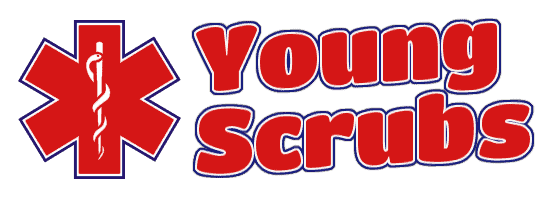This post may contain affiliate links, click here to learn more.
Pathophysiology is a versatile subject that takes its material from several subjects. It is most closely linked to Pathology, but less pragmatic.
Unlike many other subjects, there isn’t a go-to book for pathophysiology. Most students rely heavily on their pathology books, supplemented with lecture/online material.
Also, many of the books on the subject are written for nursing students. But, there are a few directed at medical students. These include:
- Clinical pathophysiology made ridiculously simple
- Pathophysiology of disease (Lange)
- Pathophysiology 6th Edition
Continue below to read my reviews on all 3 books to make a better decision on whether or not to purchase one
If you want to know more about the process I used to evaluate these books. You can read my article about evaluating medical textbooks.
Clinical pathophysiology made ridiculously simple
Another helpful book from the made ridiculously simple series. This one on pathophysiology is a great, quick read to connect the dots.
While the text is straight to the point, it is written with a sense of humor. It also features lots of drawn tables and diagrams. This makes it an effective, but light-hearted and student-friendly read.
That being said, this book does but does not do the heavy lifting. And you should not use it as your only resource.
If you are looking for something supplement to more extensive material, this is the book for you. It is both effective and affordable and comes recommended by medical students worldwide.
Check it out yourself by clicking this link to head over to Amazon. Here you can get a preview and see the current price.
Pathophysiology of Disease (Lange)
This is a more comprehensive medical book on the subject. It encompasses over 800 pages packed with useful material.
Unlike many other books on the subject, it’s written for medical students. This means a higher focus on the actual pathophysiology in question.
The book is written by an ensemble of doctors and professors. It categorically goes through organ-specific pathophysiology in each chapter. Every condition follows the same outline highlighting the etiology, pathogenesis, and clinical manifestation.
The text is supplemented with frequent use of diagrams and tables. Also, you are presented with a selection of case studies at the end of each chapter. This is a solid textbook for anyone wanting a comprehensive take on the subject.
You can check out whether this book might suit your needs by clicking this link to go to Amazon. Here you can get a sneak preview and check the current price.
Pathophysiology 6th Edition by Jacquelyn L. Banasik
Like many pathophysiology books, this one is written for a wider audience. This includes nursing students.
Because of this, it features a lot of anatomy and other background material. This makes the book longer and less straight to the point.
The overall material and presentation are good. The outline is structured methodically and frequent diagrams and tables enhance student comprehension.
Even so, the fact that it is directed at a larger audience makes it a less favorable choice. When you factor in that it is pretty expensive, it makes it even less attractive.
Even so, don’t rule it out before checking it out yourself by clicking this link to Amazon. Here you can get a preview and the current price.
What are the differences?
Pathophysiology is central to all diseases. It’s taught at a varying degree in several healthcare studies. Not just in med school. Because of this, books on the subject can be directed towards different students.
While the key concepts are the same, most medical students will benefit the most from a book written for medical students.
This way you can be sure that the information is relevant for your studies. Books that are not for medical students tend to review background material.
This includes the basic anatomical and physiological processes involved. This should be known to most medical students and becomes excessive and unnecessary.
How to proceed
You might be reading this before you know how your class is going to be. If you do, I would advise you to wait to get a book until the first couple of classes.
By doing this you get a feel for how extensive the course is. Also, you can get some recommendations from your teacher/professor and classmates.
As a general recommendation. The combination of textbooks from other subjects (mostly physiology and pathology) and lecture material should be enough.
If you want a specific book on the subject I recommend getting pathophysiology made ridiculously simple. If you find it to be too superficial you can go with Pathophysiology of Disease (Lange).
Take home message
I believe the alternatives discussed above are the best options available. Yet when deciding which one to get, the most important is to find one that suits you and your style of learning.
The best way to do that is to get a sample view of a topic and go through it. Pay attention to the format, as well as how the information is structured and presented.
This will give you a feel for the book. If it was presented in a way that you understood it, or if you found it difficult to comprehend.
I hope this article helped you with your quest for finding the pathophysiology book that is right for you.
If you found this article helpful, please let me know in the comments. Also, if you have any other book suggestions or inquiries, be sure to contact me through the email on the about page.




